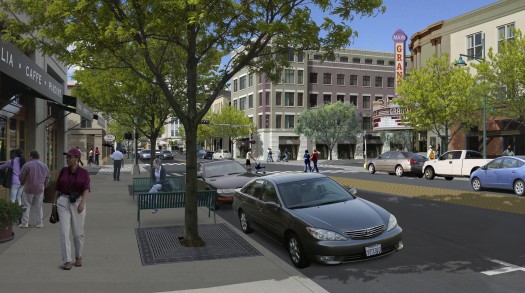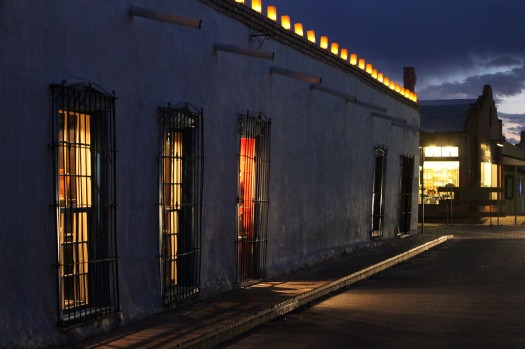Posts Tagged ‘retail’
Retail: Walkable urban primer with southwest inspiration
A couple weeks ago, I had the great pleasure of working with Bob Gibbs in Las Cruces, New Mexico, looking at ways to help downtown outperform the suburbs, helping Main Street be more profitable than strip malls. The top lessons were to nurture unique historic character in walkable formats and don’t build leasable space that…
Read MoreBlack Friday: Get your gorilla on
We’re happy when we go for a run. We’re even more happy when we go for a run in a gorilla suit — at least according to Roko Belic, director of the award-winning documentary, HAPPY. That’s because some change is gonna do ya good. Which is one of the many reasons that we placemakers advocate for immersive…
Read MoreLessons Learned from Berlin Shopfronts
Like many European cities, Berlin teaches us myriad lessons in building successful shopfronts. While the exclusive international shops along Kurfürstendamm and Friedrichstrasse are elegant and effective, the more creative successes are found in neighborhoods and courtyards. Kaid Benfield’s People Habitat describes in detail the reasons Hackeschen Höfe is so successful at the holistic level, and…
Read MoreWhy Placemaking Matters: What’s in it for me?
When a mayoral candidate from my city wrote me to ask me to repeat in writing what I’d said the night before, I realize I need to de-wonk and make my elevator speech more memorable. Why does city planning matter to people who aren’t urban designer types? If I could take an extra five minutes…
Read MoreMore Lessons from Albuquerque: Nob Hill and ABQ Uptown
Being back in Albuquerque for a charrette this week, I’m reminded that I still owe you a promised discussion from my last trip to New Mexico, back in December. This time around, I was thinking about my two favorite places to shop in the city — the historic Nob Hill and the ABQ Uptown lifestyle…
Read MoreResolved for 2014: Obstacle reduction
New year’s resolutions? Bah. Do what you love. With clarity. Only about 8% of people keep their resolutions for 365 days anyway. So what about if instead, we set out to remove the obstacles to doing the really healthy things we love? Both as individuals and as communities. This line of thinking started the other…
Read MoreParis: What People Want
As an urbanist, writing about Paris is both delectable and daunting. Tempering that is the fact that we visited in June, when the strain to both infrastructure and pricing makes my memories of past trips look more lovable. Still, the timelessness of the City, as shown so compellingly in this 1914 to 2013 series of…
Read MoreGet Your Shops into a Walkable Town Center!
Shops: Everybody Wants ‘Em Last week we started this series off with Hotels, a sometimes overlooked, value-adding addition to a walkable town center. This week we are looking at one of the essential ingredients of a town center: the retail shops. The retail component of a town center is the most visible component, often defining…
Read MoreRetail on My Mind
Seems I’ve got retail on my mind. It all started in December, with Bob Gibb’s Placemaking@Work webinar, whose tweetchat sparked a Neighbourhood Retail BlogOff led by Steve Mouzon. Then last week Victor Dover’s PM@W webinar followed up with ideas about tactical retail, where he talked about the next version of mixed use being smaller, quicker,…
Read MoreRetail: When it bends the rules and breaks the law.
Getting ready for a TEDx talk in a few weeks, I’ve once again been noticing how the places that I love the most usually break the law. The contemporary development codes and bylaws, that is, which are geared to the car, not to the pedestrian and cyclist. Then last week’s urban retail SmartCode tweetchat with…
Read More


